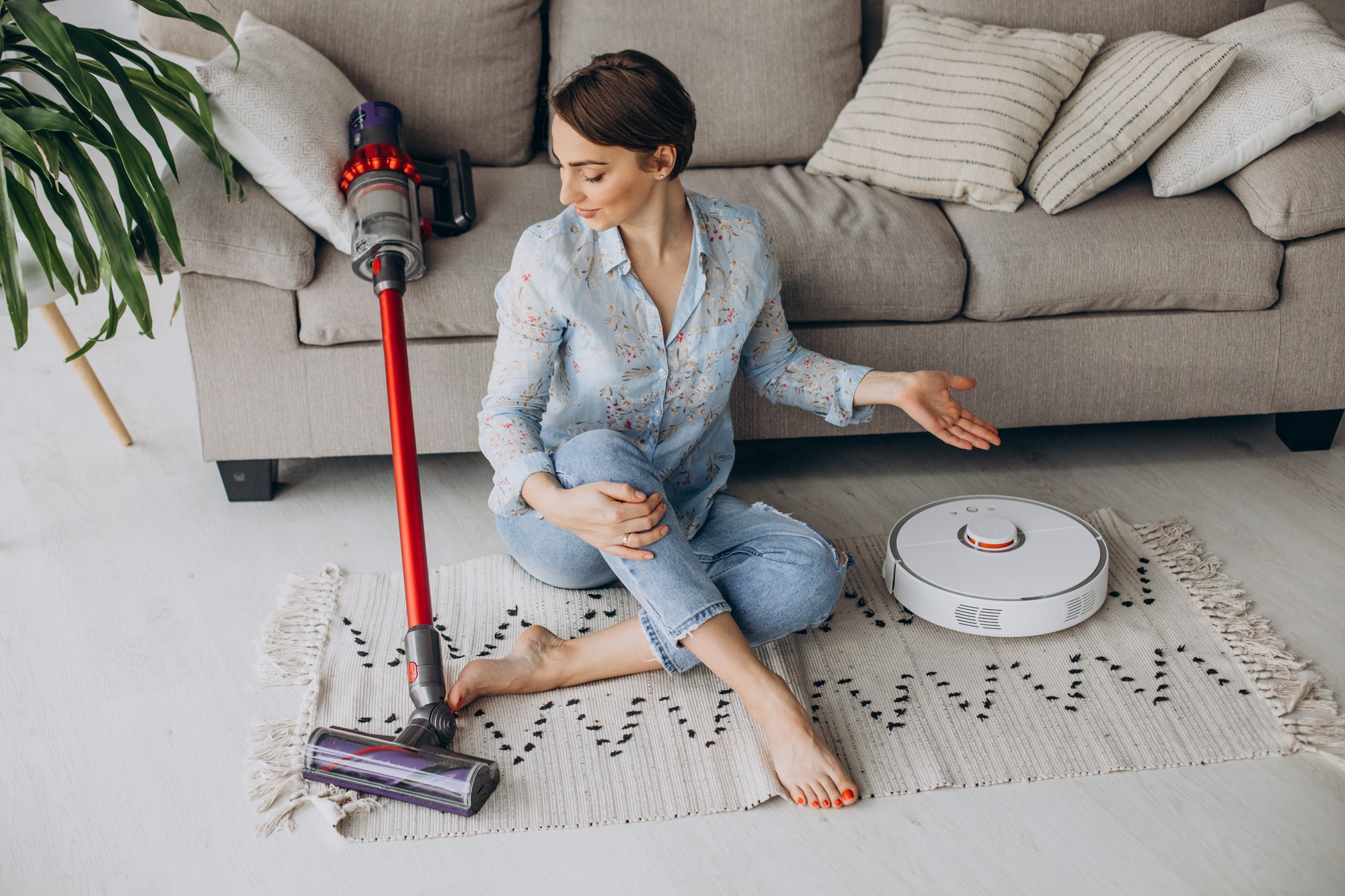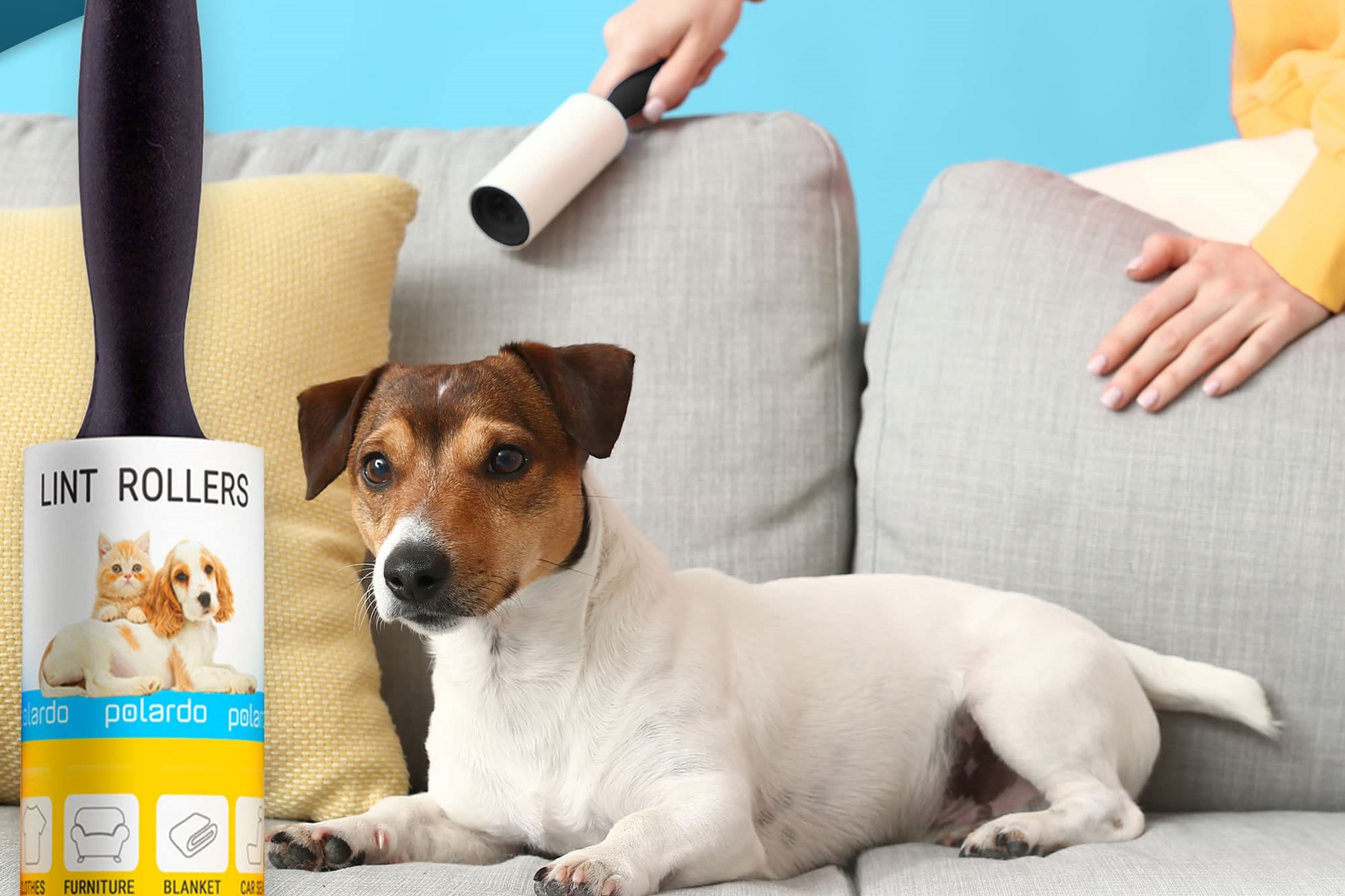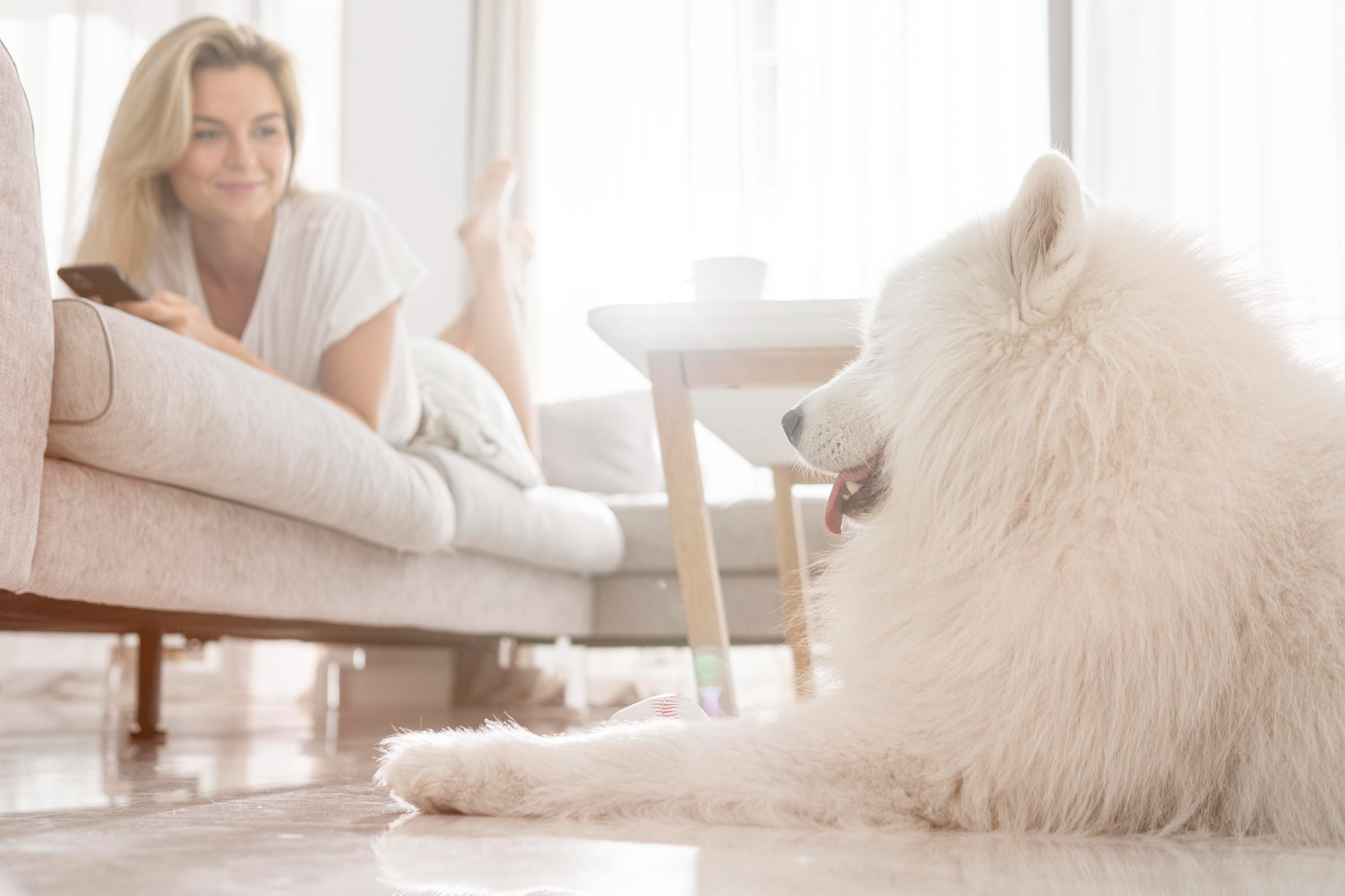If you’re a cat owner, you know the struggle all too well: cat hair on every surface of your home. While our furry friends are undeniably lovable, their shedding can make keeping your furniture clean a real challenge. But fear not! In this guide, we’ll explore effective strategies to prevent cat hair from sticking to your furniture and keep your home looking pristine.
Understanding the Problem
Why Does Cat Hair Stick to Furniture?
Cat hair sticks to furniture primarily due to static electricity. The fine, lightweight hairs cling to surfaces because of the static charge built up in both the hair and the furniture’s fabric. Static electricity causes these hairs to stick rather than fall off easily. Additionally, certain fabrics and materials are more prone to attracting and holding onto cat hair than others.
The nature of pet hair—often fine and lightweight—makes it especially prone to sticking to surfaces that have a tendency to generate static. For instance, synthetic fabrics, such as polyester or nylon, can generate more static electricity compared to natural fibers like cotton or wool. As a result, cat hair is more likely to cling to these materials.
How Cat Hair Affects Different Types of Furniture
Different furniture materials respond differently to cat hair. Here’s a closer look:
- Upholstered Furniture: Sofas and chairs with fabric upholstery are particularly prone to cat hair. The texture of the fabric can trap hair and make it difficult to remove. Fabrics with a nap or pile, like velvet or certain synthetics, are particularly challenging because the hair can become embedded in the fibers.
- Leather and Faux Leather: While hair doesn’t cling as much to these surfaces, it can still settle on them. Leather and faux leather surfaces are smoother, which means hair can slide off more easily compared to textured fabrics. However, dust and hair can still accumulate, especially if the surface is not regularly wiped down.
- Wooden Furniture: Cat hair can accumulate on wooden surfaces, but it’s easier to wipe off compared to fabric surfaces. Wooden furniture can also collect dust and hair in crevices and corners, requiring regular maintenance to keep it looking clean.
Preventive Measures
Choose the Right Furniture
Opt for Pet-Friendly Fabrics
When selecting new furniture, consider materials that are less likely to attract or hold onto cat hair. Here’s a comparison of pet-friendly fabrics:
| Fabric Type | Description | Benefits |
| Leather or Faux Leather | Smooth surfaces that don’t trap hair and are easy to clean with a damp cloth. | Less likely to attract hair; easy to wipe clean; resists dust and allergens. |
| Microfiber | Stain-resistant and low-static fabric with a tight weave. | Repels hair; prevents hair from embedding deeply; easy to vacuum. |
| Denim and Canvas | Durable materials that are less likely to attract hair; often easy to clean. | Resistant to hair accumulation; can be cleaned with vacuum or damp cloth. |
Use Furniture Covers
Covering your furniture with washable throws, slipcovers, or pet-specific covers can protect your furniture from cat hair:
- Washable: Choose covers that are easily removable and machine-washable. Regular washing helps keep the covers free from hair and other debris.
- Durable: Ensure that the covers are made from materials that can withstand regular washing and the wear and tear from your cat. Look for options that are specifically designed to be durable and easy to clean.
Keep Your Cat Groomed
Regular grooming can significantly reduce the amount of hair your cat sheds.
Brushing Your Cat
Frequent brushing is one of the most effective ways to control shedding. Use a de-shedding brush, such as the Furminator, to remove loose fur and reduce shedding. These brushes can help reach the undercoat and remove loose hair that would otherwise end up on your furniture. Choose the right brush for your cat’s coat; long-haired cats may require different tools compared to short-haired cats. Slicker brushes and grooming gloves can be effective for various types of coats. For long-haired cats, a de-shedding tool may be particularly useful in managing their thicker fur.
Bathing Your Cat
Bathing can help reduce shedding, especially in long-haired breeds. Bathing should be done as needed. Too frequent bathing can strip natural oils from your cat’s coat and potentially cause skin issues. For most cats, a bath every few months is sufficient. Use shampoos formulated for cats to avoid irritation. Pet-safe shampoos are designed to maintain the natural oils in your cat’s coat while reducing shedding.
Maintain a Clean Home
Regular cleaning can prevent cat hair from accumulating and spreading throughout your home:
Vacuum Regularly
Vacuuming is crucial to managing cat hair:
- Vacuum Upholstery: Use a vacuum with a brush or upholstery attachment to clean your furniture effectively. Many vacuums come with specialized pet hair attachments that can help lift and remove hair from fabric surfaces.
- Vacuum Carpets and Floors: Regular vacuuming of carpets and floors helps prevent hair from spreading around the house. Consider vacuums with HEPA filters to capture dander and hair. A vacuum with strong suction power and a brush roll can be particularly effective in picking up hair from carpets and rugs.
Use Lint Rollers
Lint rollers are handy tools for quick cleanups:
- Roll Over the Surface: Gently roll the lint roller over your furniture to pick up hair. The sticky sheets will grab onto the hair effectively, making it easier to remove from both fabric and hard surfaces.
- Replace Sheets as Needed: As the sheets become covered with hair, replace them to maintain effectiveness. Reusable lint rollers can be a cost-effective and eco-friendly option.
Utilize Anti-Static Products
Anti-static products can help reduce static cling and prevent hair from sticking to furniture:
- Anti-Static Sprays: Apply these sprays according to the manufacturer’s instructions to reduce static electricity. These sprays can help to neutralize the static charge that causes hair to cling to surfaces.
- Anti-Static Cloths: Use cloths treated with anti-static agents to wipe down surfaces and prevent hair from sticking. These cloths can be particularly useful for cleaning electronic devices and other surfaces prone to static build-up.
Cleaning Cat Hair from Furniture
Removing Hair from Upholstered Furniture
Vacuuming
Vacuuming upholstery can be very effective in removing cat hair:
- Use the Brush Attachment: This helps lift and remove hair from fabric surfaces. The bristles can get into the fibers to pull out hair. Many vacuum cleaners come with a motorized brush or upholstery tool specifically designed for pet hair.
- Move Slowly: Take your time to ensure you get as much hair as possible. Move the vacuum in different directions to capture hair from all angles. Consider using a handheld vacuum for smaller areas or tight spots.
Lint Rollers
Lint rollers are excellent for quick removal of cat hair:
- Roll Over the Surface: Simply roll the lint roller across your furniture to pick up hair. The sticky sheets will grab onto the hair effectively, making it easier to remove from both fabric and hard surfaces.
- Replace Sheets as Needed: As the sheets become covered with hair, replace them to maintain effectiveness. Reusable lint rollers can be a cost-effective and eco-friendly option. For large areas, you may need several sheets to thoroughly remove all the hair.
Cleaning Leather and Faux Leather
Use a Damp Cloth
Leather and faux leather require different cleaning methods. Use a damp cloth to gently wipe the surface, helping to remove hair and dust without damaging the material. Ensure the cloth is only slightly damp to avoid over-saturating the leather. After wiping, make sure to dry the surface thoroughly to prevent any potential damage or discoloration. Use a clean, dry cloth to wipe away any excess moisture.
Leather Cleaners
Specialized leather cleaners can be helpful. Use a cleaner designed for leather to remove hair and maintain the material’s appearance. Leather cleaners often come with conditioners that help keep the leather soft and supple. Always follow the manufacturer’s guidelines for application to avoid damaging the leather. Test the cleaner on a small, inconspicuous area first to ensure compatibility.
Maintaining Wooden Furniture
Dust Regularly
Dusting helps keep wooden furniture clean and free from hair. Dust your wooden furniture regularly with a microfiber cloth to remove hair and dust. Microfiber cloths are effective at trapping dust and hair without leaving behind lint. Additionally, use furniture polish as needed to keep the wood looking its best. Apply the polish according to the manufacturer’s instructions, and avoid over-applying, which can leave a sticky residue.
Additional Tips and Tricks
Use Pet Hair Removal Tools
Several specialized tools can make removing cat hair easier:
- Rubber Gloves: Wearing rubber gloves and running your hands over furniture can gather hair. The friction created by the rubber helps lift the hair from the surface. You can also dampen the gloves slightly for added effectiveness.
- Pet Hair Brushes: Brushes designed specifically for pet hair removal can be very effective in collecting hair from various surfaces. Look for brushes with rubber bristles or specialized designs that work well on both fabric and hard surfaces.
Keep Your Cat’s Environment Clean
Ensuring that your cat’s environment is clean can also help reduce the amount of hair that ends up on your furniture:
- Wash Cat Bedding Regularly: Clean your cat’s bedding frequently to prevent hair buildup. Use a washing machine or hand wash as needed. Regular cleaning helps reduce the amount of hair that sheds onto other surfaces.
- Use Pet-Specific Cleaning Products: Products designed for pet owners can help with hair removal and overall cleanliness. Look for enzymatic cleaners that break down pet dander and hair, making it easier to clean.
Consider Air Purifiers
Air purifiers with HEPA filters can be beneficial in capturing pet dander and hair:
- Choose a HEPA Filter: HEPA filters are effective at capturing tiny particles, including pet dander and hair, from the air. Look for air purifiers with a high Clean Air Delivery Rate (CADR) for best results.
- Place Purifiers Strategically: Position air purifiers in common areas where hair and dander are likely to accumulate, such as living rooms and bedrooms. Regularly clean and replace filters to maintain optimal performance.
By adopting these strategies, you can significantly reduce the amount of cat hair that sticks to your furniture and keep your home cleaner. With the right approach, managing pet hair becomes a more manageable task, allowing you to enjoy your feline friend without the constant struggle of hair-covered furniture.
These detailed steps and tips will help ensure that your home remains clean and comfortable, even with the presence of your beloved cat.




